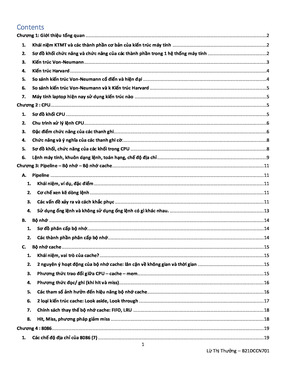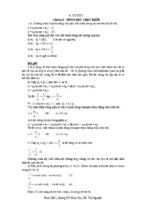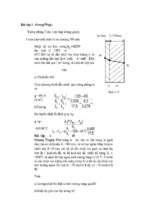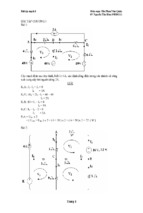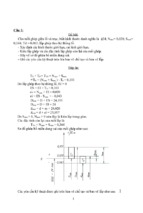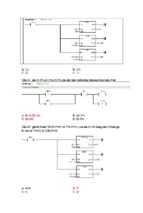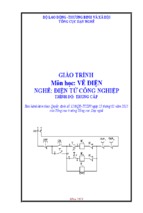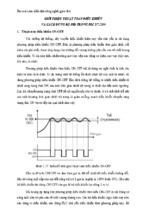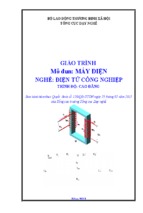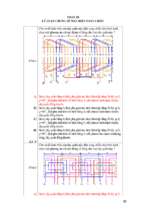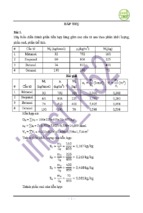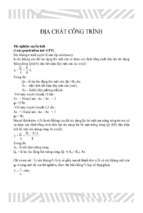“Book/Definitions”
Electrical Engineering Dictionary.
Ed. Phillip A. Laplante
Boca Raton: CRC Press LLC, 2000
Special
Symbols
α-level set
a crisp set of elements belonging to a fuzzy set A at least to a degree α
Aα = {x ∈ X | µA (x) ≥ α}
See also crisp set, fuzzy set.
1f
hertz.
common symbol for bandwidth, in
common symbol for gallium ar�rGaAs
senide relative dielectric constant. �rGaAs =
12.8.
common symbol for silicon relative
�rSi
dielectric constant. �rSi = 11.8.
�0
symbol for permitivity of free space.
�0 = 8.849 × 10−12 farad/meter.
common symbol for relative dielectric
�r
constant.
common symbol for DC to RF conηDC
version efficiency. Expressed as a percentage.
common symbol for power added efηa
ficiency. Expressed as a percentage.
common symbol for total or true effiηt
ciency. Expressed as a percentage.
common symbol for source reflec0opt
tion coefficient for optimum noise performance.
2000 by CRC Press LLC
c
µ0
common symbol for permeability of
free space constant. µ0 = 1.257 × 10−16
henrys/meter.
common symbol for relative permeµr
ability.
ω
common symbol for radian frequency
in radians/second. ω = 2 · π · frequency.
common symbol for positive transition
θ+
angle in degrees.
common symbol for negative transiθ−
tion angle in degrees.
common symbol for conduction anθcond
gle in degrees.
common symbol for saturation angle
θsat
in degrees.
common symbol for FET channelθCC
to-case thermal resistance in ◦ C/watt.
common symbol for bipolar junctionθJ C
to-case thermal resistance in ◦ C/watt.
common symbol for Richardson’s
A∗
constant. A∗ = 8.7 amperes · cm/◦ K
BVGD
voltage.
See gate-to-drain breakdown
BVGS
voltage.
See gate-to-source breakdown
dv/dt
rate of change of voltage withstand capability without spurious turn-on of
the device.
Hci
See intrinsic coercive force.
common symbol for excess noise in
ne
watts.
ns h
watts.
common symbol for shot noise in
nt
common symbol for thermal noise in
watts.
deux indices,” IRIA Rapport Laboria, No.
31, Sept. 1973.
10base2
a type of coaxial cable used to
connect nodes on an Ethernet network. The
10 refers to the transfer rate used on standard
Ethernet, 10 megabits per second. The base
means that the network uses baseband communication rather than broadband communications, and the 2 stands for the maximum
length of cable segment, 185 meters (almost
200). This type of cable is also called “thin”
Ethernet, because it is a smaller diameter cable than the 10base5 cables.
2-D Fornasini–Marchesini model
model described by the equations
10base5
a type of coaxial cable used to
connect nodes on an Ethernet network. The
10 refers to the transfer rate used on standard Ethernet, 10 megabits per second. The
base means that the network uses baseband
communication rather than broadband communications, and the 5 stands for the maximum length of cable segment of approximately 500 meters. This type of cable is also
called “thick” Ethernet, because it is a larger
diameter cable than the 10base2 cables.
10baseT
a type of coaxial cable used to
connect nodes on an Ethernet network. The
10 refers to the transfer rate used on standard
Ethernet, 10 megabits per second. The base
means that the network uses baseband communication rather than broadband communications, and the T stands for twisted (wire)
cable.
2-D Attasi model
by the equations
a 2-D model described
xi+1,j +1 = −A1 A2 xi,j + A1 xi+1,j
+ A2 xi,j +1 + Buij
yij = Cxij + Duij
i, j ∈ Z+ (the set of nonnegative integers).
Here xij ∈ R n is the local state vector,
uij ∈ R m is the input vector, yij ∈ R p is
the output vector, and A1 , A2 , B, C, D are
real matrices. The model was introduced by
Attasi in “Systemes lineaires homogenes a
2000 by CRC Press LLC
c
a 2-D
xi+1,j +1 = A0 xi,j + A1 xi+1,j
+ A2 xi,j +1 + Buij (1a)
(1b)
yij = Cxij + Duij
i, j ∈ Z+ (the set of nonnegative integers)
here xij ∈ R n is the local state vector,
uij ∈ R m is the input vector, yij ∈ R p is
the output vector Ak (k = 0, 1, 2), B, C, D
are real matrices. A 2-D model described by
the equations
xi+1,j +1 = A1 xi+1,j + A2 xi,j +1
+ B1 ui+1,j + B2 ui,j +1 (2)
i, j ∈ Z+ and (1b) is called the second 2-D
Fornasini–Marchesini model, where xij , uij ,
and yij are defined in the same way as for (1),
Ak , Bk (k = 0, 1, 2) are real matrices. The
model (1) is a particular case of (2).
2-D general model
a 2-D model described by the equations
xi+1,j +1 = A0 xi,j + A1 xi+1,j
+ A2 xi,j +1 + B0 uij
+ B1 ui+1,j + B2 ui,j +1
yij = Cxij + Duij
i, j ∈ Z+ (the set of nonnegative integers)
here xij ∈ R n is the local state vector, uij ∈
R m is the input vector, yij ∈ R p is the output
vector and Ak , Bk (k = 0, 1, 2), C, D are real
matrices. In particular case for B1 = B2 = 0
we obtain the first 2-D Fornasini–Marchesini
model and for A0 = 0 and B0 = 0 we obtain
the second 2-D Fornasini–Marchesini model.
2-D polynomial matrix equation
equation of the form
AX + BY = C
a 2-D
(1)
where A ∈ R k×p [s], B ∈ R k×q [s], C ∈
R k×m [s] are given, by a solution to (1) we
mean any pair X ∈ R p×m [s], Y ∈ R q×m [s]
satisfying the equation. The equation (1)
has a solution if and only if the matrices
[A, B, C] and [A, B, 0] are column equivalent or the greatest common left divisor of A
and B is a left divisor of C. The 2-D equation
AX + Y B = C
R k×p
R q×m [s],
(2)
are equivalent.
2-D Roesser model
a 2-D model described by the equations
# �
"
�" h # � �
h
xi+1,j
xij
A1 A2
B1
=
+
u
v
A3 A4
B2 ij
xi,j +1
xijv
i, j ∈ Z+ (the set of nonnegative integers),
" #
xh
yij = C ijv + Duij
xij
Here xijh ∈ R n1 and xijv ∈ R n2 are the horizontal and vertical local state vectors, respectively, uij ∈ R m is the input vector, yij ∈ R p
is the output vector and A1 , A2 , A3 , A4 , B1 ,
B2 , C, D are real matrices. The model was
introduced by R.P. Roesser in “A discrete
state-space model for linear image processing,” IEEE Trans. Autom. Contr., AC-20,
No. 1, 1975, pp. 1-10.
2-D shuffle algorithm an extension of the
Luenberger shuffle algorithm for 1-D case.
The 2-D shuffle algorithm can be used for
checking the regularity condition
det [Ez1 z2 − A0 − A1 z1 − A2 z2 ] 6 = 0
for some (z1 , z2 ) ∈ C×C of the singular general model ( See singular 2-D general model).
2000 by CRC Press LLC
2-D Z-transform
F (z1 , z2 ) of a discrete 2-D function fij satisfying the condition fij = 0 for i < 0 or/and j < 0 is
defined by
F (z1 , z2 ) =
R k×m [s]
C∈
A∈
[s], B ∈
are given, is called the bilateral 2-D polynomial matrix equation. By a solution to (2) we
mean any pair X ∈ R p×m [s], Y ∈ R k×q [s]
satisfying the equation. The equation has a
solution if and only if the matrices
�
�
�
�
A 0
AC
and
0 B
0 B
c
The algorithm is based on the row compression of suitable matrices.
∞
∞ X
X
−j
fij z1−i z2
i=0 j =0
An 2-D discrete fij has the 2-D Z-transform
if the sum
∞
∞ X
X
−j
fij z1−i z2
i=0 j =0
exists.
2DEGFET
See high electron mobility
transistor(HEMT).
2LG
See double phase ground fault.
3-dB bandwidth
for a causal low-pass
or bandpass filter with a frequency function
H (j ω) the frequency at which | H (j ω) |dB
is less than 3 dB down from the peak value
| H (ωP ) |.
3-level laser
a laser in which the most
important transitions involve only three energy states; usually refers to a laser in which
the lower level of the laser transition is separated from the ground state by much less than
the thermal energy kT. Contrast with 4-level
laser.
3-level system
a quantum mechanical
system whose interaction with one or more
electromagnetic fields can be described by
considering primarily three energy levels.
For example, the cascade, vee, and lambda
systems are 3-level systems.
4-level laser
a laser in which the most
important transitions involve only four energy states; usually refers to a laser in which
the lower level of the laser transition is separated from the ground state by much more
than the thermal energy kT . Contrast with
3-level laser.
45 Mbs DPCM for NTSC color video
a codec wherein a subjectively pleasing picture is required at the receiver. This does
not require transparent coding quality typical
of TV signals. The output bit-rate for video
matches the DS3 44.736 Megabits per second
rate. The coding is done by PCM coding the
NTSC composite video signal at three times
the color subcarrier frequency using 8 bit per
pixel. Prediction of current pixel is obtained
by averaging the pixel three after current and
681 pixels before next to maintain the subcarrier phase. A leak factor is chosen before
computing prediction error to main the quali-
2000 by CRC Press LLC
c
ty of the image. For example a leak factor of
31
32 the prediction decay is maintained at the
center of the dynamic range.
XL− = 128 +
�
31 −
X − 128 .
32
Finally, a clipper at the coder and decoder
is employed to prevent quantization errors.
90% withstand voltage
a measure of
the practical lightning or switching-surge impulse withstand capability of a piece of power
equipment. This voltage withstand level is
two standard deviations above the BIL of the
equipment.
A
a posteriori probability
statistics.
a priori probability
See posterior
See prior statistics.
A-mode display
returned ultrasound
echoes displayed as amplitude versus depth
into the body.
A-site
in a ferroelectric material with the
chemical formula ABO3 , the crystalline location of the A atom.
A/D
See analog-to-digital converter.
AAL
See ATM adaptation layer.
ABC
See absorbing boundary condition.
ABCD
propagation of an optical ray
through a system can be described by a simple 2×2 matrix. In ray optics, the characteristic of a system is given by the corresponding ray matrix relating the ray’s position from
the axis and slope at the input to those at the
output.
ABCD formalism
analytic method using
two-by-two ABCD matrices for propagating
Gaussian beams and light rays in a wide variety of optical systems.
ABCD law
analytic formula for transforming a Gaussian beam parameter from
one reference plane to another in paraxial optics, sometimes called the Kogelnik transformation. ABCD refers to the ABCD matrix.
ABCD matrix
the matrix containing
ABCD parameters. See ABCD parameters.
ABCD parameters
a convenient mathematical form that can be used to characterize
2000 by CRC Press LLC
c
two-port networks. Sometimes referred to
as chain parameters. ABCD parameters are
widely used to model cascaded connections
of two-port microwave networks, in which
case the ABCD matrix is defined for each
two-port network. ABCD parameters can
also be used in analytic formalisms for propagating Gaussian beams and light rays. Ray
matrices and beam matrices are similar but
are often regarded as distinct.
ABC parameters have a particularly useful property in circuit analysis where the
composite ABCD parameters of two cascaded networks are the matrix products of
the ABCD parameters of the two individual
circuits. ABCD parameters are defined as
�� �
� � �
AB
v2
v1
=
i1
i2
CD
where v1 and v2 are the voltages on ports one
and two, and i1 and i2 are the branch currents
into ports one and two.
aberration
an imperfection of an optical
system that leads to a blurred or a distorted
image.
abnormal event any external or programgenerated event that makes further normal
program execution impossible or undesirable, resulting in a system interrupt. Examples of abnormal events include system detection of power failure; attempt to divide by
0; attempt to execute privileged instruction
without privileged status; memory parity error.
abort
(1) in computer systems, to terminate the attempt to complete the transaction,
usually because there is a deadlock or because completing the transaction would result in a system state that is not compatible with “correct” behavior, as defined by a
consistency model, such as sequential consistency.
(2) in an accelerator, terminating the acceleration process prematurely, either by inhibiting the injection mechanism or by removing circulating beam to some sort of
dump. This is generally done to prevent injury to some personnel or damage to accelerator components.
ABR
See available bit rate.
absolute address
an address within an
instruction that directly indicates a location in
the program’s address space. Compare with
relative addressing.
absolute addressing
an addressing mode
where the address of the instruction operand
in memory is a part of the instruction so that
no calculation of an effective address by the
CPU is necessary.
For example, in the Motorola M68000 architecture instruction ADD 5000,D1, a 16-bit
word operand, stored in memory at the word
address 5000, is added to the lower word in
register D1. The address “5000” is an example of using the absolute addressing mode.
See also addressing mode.
absolute encoder
an optical device
mounted to the shaft of a motor consisting
of a disc with a pattern and light sources and
detectors. The combination of light detectors
receiving light depends on the position of the
rotor and the pattern employed (typically the
Gray code). Thus, absolute position information is obtained. The higher the resolution
required, the larger the number of detectors
needed. See also encoder.
absolute moment The pth order absolute
moment µp of a random variable X is the
expectation of the absolute value of X raised
to the pth power:
µp = E[|X|]p .
See also central moment, central absolute
moment. See also expectation.
absolute pressure
units to measure gas
pressure in a vacuum chamber with zero being a perfect vacuum. Normally referred to
as psia (pounds per square inch absolute).
2000 by CRC Press LLC
c
absolute sensitivity
denoted S(y, x), is
simply the partial derivative of y with respect
to x, i.e., S(y, x) = ∂y/∂x, and is used to
establish the relationships between absolute
changes. See sensitivity, sensitivity measure,
relative sensitivity, semi-relative sensitivity.
absolute stability
occurs when the network function H (s) has only left half-plane
poles.
absorber
generic term used to describe
material used to absorb electromagnetic energy.
Generally made of polyurethane
foam and impregnated with carbon (and fireretardant salts), it is most frequently used to
line the walls, floors and ceilings of anechoic
chambers to reduce or eliminate reflections
from these surfaces.
absorbing boundary condition (ABC)
a
fictitious boundary introduced in differential
equation methods to truncate the computational space at a finite distance without, in
principle, creating any reflections.
absorption
(1) process that dissipates energy and causes a decrease in the amplitude
and intensity of a propagating wave between
an input and output reference plane.
(2) reduction in the number of photons of a
specific wavelength or energy incident upon
a material. Energy transferred to the material
may result in a change in the electronic structure, or in the relative movement of atoms in
the material (vibration or rotation).
(3) process by which atoms or molecules
stick to a surface. If a bond is formed, it is
termed chemisorption, while the normal case
is physisorption. The absorption process proceeds due to, and is supported by, the fact that
this is a lower energy state.
absorption coefficient (1) in a passive device, the negative ratio of the power absorbed
(pabsorbed = pin −pout ) ratioed to the power in
(pin = pincident − preflected ) per unit length (l),
usually expressed in units of 1/wavelength or
1/meter.
(2) factor describing the fractional attenuation of light with distance traversed in a
medium, generally expressed as an exponential factor, such as k in the function e−kx ,
with units of (length)-1. Also called attenuation coefficient.
absorption cross section
energy absorbed by the scattering medium, normalized to the wavenumber. It has dimensions
of area.
absorption edge
the optical wavelength
or photon energy corresponding to the separation of valence and conduction bands in
solids; at shorter wavelengths, or higher photon energies than the absorption edge, the absorption increases strongly.
absorption grating
(1) a diffraction
grating where alternate grating periods are
opaque.
(2) an optical grating characterized by
spatially periodic variation in the absorption
of light. Absorption gratings are generally
less efficient than phase gratings.
absorption optical fiber
the amount of
optical power in an optical fiber captured
by defect and impurity centers in the energy
bandgap of the fiber material and lost in the
form of longwave infrared radiation.
AC
See alternating current.
AC bridge
one of a wide group of
bridge circuits used for measurements of resistances, inductances, and capacitances, and
to provide AC signal in the bridge transducers
including resistors, inductors, and capacitors.
The Wheatstone bridge can be used with
a sinusoidal power supply, and with an AC
detector (headphones, oscilloscope), one can
use essentially the same procedure for measurement of resistors as in DC applications.
Only a small number of other AC bridges are
used in modern electric and electronic equipment. A strong selection factor was the fact
that in a standard capacitor the electrical pa-
2000 by CRC Press LLC
c
rameter are closest to the parameters of an
ideal capacitor. Hence, not only a capacitance is measured in terms of capacitance (in
resistive ratio arms bridges), but the inductance as well is measured in terms of capacitance (Hay and Owen bridges).
The AC bridges with ratio arms that are
tightly coupled inductances allow measurement of a very small difference between currents in these inductances, and this fact is
used in very sensitive capacitance transducers.
AC circuit electrical network in which the
voltage polarity and directions of current flow
change continuously, and often periodically.
Thus, such networks contain alternating currents as opposed to direct currents, thereby
giving rise to the term.
AC coupling
a method of connecting two
circuits that allows displacement current to
flow while preventing conductive currents.
Reactive impedance devices (e.g., capacitors
and inductive transformers) are used to provide continuity of alternating current flow
between two circuits while simultaneously
blocking the flow of direct current.
AC motor
an electromechanical system that converts alternating current electrical power into mechanical power.
AC plasma display
a display that employs an internal capacitive dielectric layer
to limit the gas discharge current.
AC steady-state power
the average
power delivered by a sinusoidal source to a
network, expressed as
P =| V | · | I | cos(θ )
√
√
where 2· | V | and 2· | I | are the peak
values, respectively, of the AC steady-state
voltage and current at the terminals. θ represents the phase angle by which the voltage
leads the current.
AC/AC converter
a power electronics
device in which an AC input voltage of some
magnitude, frequency, and number of phases
is changed to an AC output with changes to
any of the previously mentioned parameters.
AC/AC converters usually rectify the input
source to a DC voltage and then invert the
DC voltage to the desired AC voltage.
ation error to a constraint on the gain of the
open loop system. The relevant equations
are ea = K1a and Ka = lims→inf ty s 2 q(s),
where q(s) is the transfer function model
of the open loop system, including the controller and the process in cascade, and s is
the Laplace variable. See also position error
constant, velocity error constant.
AC/DC converter
accelerator
(1) a positive electrode in a
vacuum tube to accelerate emitted electrons
from its cathode by coulomb force in a desired direction.
(2) a machine used to impart large kinetic
energies to charged particles such as electrons, protons, and atomic nuclei. The accelerated particles are used to probe nuclear
or subnuclear phenomena in industrial and
medical applications.
See rectifier.
AC-DC integrated system
a power system containing both AC and DC transmission
lines.
ACARS
aircraft communications addressing and reporting. A digital communications link using the VHF spectrum for
two-way transmission of data between an aircraft and ground. It is used primarily in civil
aviation applications.
ACC
See automatic chroma control.
accelerated testing
tests conducted at
higher stress levels than normal operation but
in a shorter period of time for the specific
purpose to induce failure faster.
accelerating power
the excess electric
power at a synchronous machine unit which
cannot be transmitted to the load because of
a short circuit near its terminals. This energy
gives rise to increasing rotor angle.
acceleration error
the final steady difference between a parabolic setpoint and the
process output in a unity feedback control
system. Thus it is the asymptotic error in position that arises in a closed loop system that
is commanded to move with constant acceleration. See also position error, velocity error.
acceleration error constant
a gain Ka
from which acceleration error ea is readily determined. The acceleration error constant is a concept that is useful in the design
of unity feedback control systems, since it
transforms a constraint on the final acceler-
2000 by CRC Press LLC
c
acceptable delay
the voice signal delay that results in inconvenience in the voice
communication. A typically quoted value is
300 ms.
acceptance
in an accelerator, it defines
how "large" a beam will fit without scraping into the limiting aperture of a transport
line. The acceptance is the phase-space volume within which the beam must lie to be
transmitted through an optical system without losses. From an experimenters point
of view acceptance is the phase-space volume intercepted by an experimenter’s detector system.
acceptor
(1) an impurity in a semiconductor that donates a free hole to the valence
band.
(2) a dopant species that traps electrons,
especially with regard to semiconductors.
access channel
a channel in a communications network that is typically allocated for
the purpose of setting up calls or communication sessions. Typically the users share the
access channel using some multiple access
algorithm such as ALOHA or CSMA.
access control
a means of allowing access to an object based on the type of access sought, the accessor’s privileges, and the
owner’s policy.
access control list
a list of items associated with a file or other object; the list contains the identities of users that are permitted
access to the associated file. There is information (usually in the form of a set of bits)
about the types of access (such as read, write,
or delete) permitted to the user.
access control matrix
a tabular representation of the modes of access permitted
from active entities (programs or processes)
to passive entities (objects, files, or devices).
A typical format associates a row with an active entity or subject and a column with an
object; the modes of access permitted from
that active entity to the associated passive entity are listed in the table entry.
access line
a communication line that
connects a user’s terminal equipment to a
switching node.
access mechanism
a circuit board or an
integrated chip that allows a given part of a
computer system to access another part. This
is typically performed by using a specific access protocol.
access protocol
a set of rules that establishes communication among different parts.
These can involve both hardware and software specifications.
access right
permission to perform an
operation on an object, usually specified as
the type of operation that is permitted, such
as read, write, or delete. Access rights can
be included in access control lists, capability
lists, or in an overall access control matrix.
access time
the total time needed to retrieve data from memory. For a disk drive
this is the sum of the time to position the
read/write head over the desired track and the
2000 by CRC Press LLC
c
time until the desired data rotates under the
head. (LW)
accidental rate
the rate of false coincidences in the electronic counter experiment
produced by products of the reactions of more
than one beam particle within the time resolution of the apparatus.
accumulation
(1) an increase in the majority carrier concentration of a region of
semiconductor due to an externally applied
electric field.
accumulator
(1) a register in the CPU
(processor) that stores one of the operands
prior to the execution of an operation, and
into which the result of the operation is
stored. An accumulator serves as an implicit
source and destination of many of the processor instructions. For example, register A
of the Intel 8085 is an accumulator. See also
CPU .
(2) the storage ring in which successive
pulses of particles are collected to create a
particle beam of reasonable intensity for colliding beams.
achievable rate region
for a multiple
terminal communications system, a set of
rate-vectors for which there exist codes such
that the probability of making a decoding error can be made arbitrarily small. See also
capacity region, multiple access channel.
achromatic the quality of a transport line
or optical system where particle momentum
has no effect on its trajectory through the system. In an achromatic device or system, the
output beam displacement or divergence (or
both) is independent of the input beam’s momentum. If a system of lenses is achromatic,
all particles of the same momentum will have
equal path lengths through the system.
ACI
See adjacent channel interference.
acknowledge
(1) a signal which indicates
that some operation, such as a data transfer,
has successfully been completed.
(2) to detect the successful completion of
an operation and produce a signal indicating
the success.
acoustic attenuation
the degree of amplitude suppression suffered by the acoustic wave traveling along the acousto-optic
medium.
acoustic laser
a laser (or maser) in which
the amplified field consists of soundwaves or
phonons rather than electromagnetic waves;
phonon laser or phaser.
acoustic memory
a form of circulating
memory in which information is encoded in
acoustic waves, typically propagated through
a trough of mercury. Now obsolete.
acoustic velocity
the velocity of the
acoustic signal traveling along the acoustooptic medium.
acoustic wave
a propagating periodic
pressure wave with amplitude representing
either longitudinal or shear particle displacement within the wave medium; shear waves
are prohibited in gaseous and liquid media.
acousto-optic cell
a device consisting of
a photo-elastic medium in which a propagating acoustic wave causes refractive-index
changes, proportional to acoustic wave amplitude, that act as a phase grating for diffraction of light. See also Bragg cell.
acousto-optic channelized radiometer
See acousto-optic instantaneous spectrum
analyzer in Bragg mode.
acousto-optic correlator
an optical system that consists of at least one acoustooptic cell, imaging optics between cells and
fixed masks, and photodetectors whose outputs correspond to the correlation function of
the acoustic wave signal within one cell with
2000 by CRC Press LLC
c
another signal in a second cell, or with fixed
signals on a mask.
acousto-optic deflector device
device
where acousto-optic interaction deflects the
incident beam linearly as a function of the
input frequency of the RF signal driving the
device.
acousto-optic device
descriptor of
acousto-optic cells of any design; generally
describes a cell plus its transducer structure(s), and may encompass either bulk,
guided-wave, or fiber-optic devices.
acousto-optic effect
the interaction of
light with sound waves and in particular the
modification of the properties of a light wave
by its interactions with an electrically controllable sound wave. See also Brillouin
scattering.
acousto-optic frequency excisor
similar
to an acousto-optic spectrum analyzer where
the RF temporal spectrum is spatially and selectively blocked to filter the RF signal feeding the Bragg cell.
acousto-optic instantaneous spectrum analyzer in Bragg mode device in which the
temporal spectrum of a radio frequency signal is instantaneously and spatially resolved
in the optical domain using a Fourier transform lens and a RF signal-fed Bragg cell.
acousto-optic modulator
a device that
modifies the amplitude or phase of a light
wave by means of the acousto-optic effect.
acousto-optic processor
an optical system that incorporates acousto-optic cells configured to perform any of a number of mathematical functions such as Fourier transform, ambiguity transforms, and other timefrequency transforms.
acousto-optic scanner
a device that uses
an acoustic wave in a photoelastic medium
to deflect light to different angular positions
based on the frequency of the acoustic wave.
acousto-optic space integrating convolver
device that is the same as an acousto-optic
space integrating convolver except that it implements the convolution operation.
acousto-optic space integrating correlator
an acousto-optic implementation of the correlation function where two RF signals are
spatially impressed on two diffracted beams
from Bragg cells, and a Fourier transform
lens spatially integrates these beams onto a
point sensor that generates a photo current
representing the correlation function.
acousto-optic spectrum analyzer
an
acousto-optic processor that produces at a
photodetector output array the Fourier decomposition of the electrical drive signal of
an acousto-optic device.
acousto-optic time integrating convolver
same as the acousto-optic time integrating
correlator, except implements the signal convolution operation. See acousto-optic time
integrating correlator.
acousto-optic time integrating correlator
an acousto-optic implementation of the correlation function where two RF signals are
spatially impressed on two diffracted beams
from Bragg cells, and a time integrating sensor generates the spatially distributed correlation results.
acousto-optic triple product processor
signal processor that implements a triple integration operation using generally both space
and time dimensions.
acousto-optic tunable filter (AOTF)
an
acousto-optic device that selects specific optical frequencies from a broadband optical
beam, depending on the number and frequencies of acoustic waves generated in the device.
2000 by CRC Press LLC
c
acousto-optics
the area of study of interaction of light and sound in media, and
its utilization in applications such as signal
processing and filtering.
ACP
See adjacent channel power.
acquisition
(1) in digital communications systems, the process of acquiring synchronism with the received signal. There
are several levels of acquisitions, and for a
given communication system several of them
have to be performed in the process of setting
up a communication link: frequency, phase,
spreading code, symbol, frame, etc.
(2) in analog communications systems,
the process of initially estimating signal parameters (for example carrier frequency offset, phase offset) required in order to begin
demodulation of the received signal.
(3) in vision processing, the process by
which a scene (physical phenomenon) is
converted into a suitable format that allows for its storage or retrieval. See also
synchronization.
across the line starter a motor starter that
applies full line voltage to the motor to start.
This is also referred to as “hard starting” because it causes high starting currents. Larger
motors require reduced voltage or “soft starting.”
ACRR
See adjacent channel reuse ratio.
ACSR
aluminum cable, steel-reinforced.
A kind of overhead electric power conductor made up of a central stranded steel cable
overlaid with strands of aluminum.
ACT
See anticomet tail.
action potential
a propagating change in
the conductivity and potential across a nerve
cell’s membrane; a nerve impulse in common
parlance.
activation function
in an artificial neural
network, a function that maps the net output
of a neuron to a smaller set of values. This
set is usually [0, 1]. Typical functions are the
sigmoid function or singularity functions like
the step or ramp.
active load
a transistor connected so as to
replace a function that would conventionally
be performed by a passive component such
as a resistor, capacitor, or inductor.
active contour
a deformable template
matching method that, by minimizing the
energy function associated with a specific
model (i.e., a specific characterization of the
shape of an object), deforms the model in
conformation to salient image features.
active load-pull measurement
a measurement method where transfer characteristics of a device can be measured by electrically changing the load impedance seen from
the device. In an active load-pull measurement, the load impedance is defined by using
an output signal from the device and an injected signal from the output of the device.
active device
a device that can convert
energy from a DC bias source to a signal at
an RF frequency. Active devices are required
in oscillators and amplifiers.
active filter
(1) a filter that has an energy gain greater than one, that is, a filter that
outputs more energy than it absorbs.
(2) a form of power electronic converter
designed to effectively cancel harmonic currents by injecting currents that are equal and
opposite to, or 180◦ out of phase with, the target harmonics. Active filters allow the output current to be controlled and provide stable operation against AC source impedance
variations without interfering with the system
impedance.
The main type of active filter is the series
type in which a voltage is added in series with
an existing bus voltage. The other type is the
parallel type in which a current is injected
into the bus and cancels the line current harmonics.
active impedance
the impedance at the
input of a single antenna element of an array with all the other elements of the array
excited.
active layer
See active region.
active learning
a form of machine learning where the learning system is able to interact with its environment so as to affect the
generation of training data.
2000 by CRC Press LLC
c
active logic
a digital logic that operates
all of the time in the active, dissipative region
of the electronic amplifiers from which it is
constructed. The output of such a gate is
determined primarily by the gate and not by
the load.
active magnetic bearing
a magnetic
bearing that requires input energy for stable
support during operation. Generally implemented with one or more electromagnets and
controllers.
active mixer a mixer that uses three terminal devices such as FET rather than diodes as
nonlinear element. One advantage of active
mixers is that they can provide conversion
gain.
active network
an electrical network
that contains some solid state devices such as
bipolar junction transistors (BJTs) or metaloxide-silicon field effect transistors (FETs)
operating in their active region of the voltage vs. current characteristic. To ensure that
these devices are operating in the active region, they must be supplied with proper DC
biasing.
active neuron
a neuron with a non-zero
output. Most neurons have an activation
threshold. The output of such a neuron has
zero output until this threshold is reached.
active power
See real power.
active power line conditioner
a device
which senses disturbances on a power line
and injects compensating voltages or currents
to restore the line’s proper waveform.
active RC filter
an electronic circuit
made up of resistors, capacitors, and operational amplifiers that provide well-controlled
linear frequency-dependent functions, e.g.,
low-, high-, and bandpass filters.
active redundancy
a circuit redundancy
technique that assures fault-tolerance by detecting the existence of faults and performing
some action to remove the faulty hardware,
e.g., by standby sparing.
active region
semiconductor material
doped such that electrons and/or holes are
free to move when the material is biased. In
the final fabricated device, the active regions
are usually confined to very small portions of
the wafer material.
active-high
(1) a logic signal having its
asserted state as the logic ONE state.
(2) a logic signal having the logic ONE
state as the higher voltage of the two states.
active-low
(1) a logic signal having its
asserted state as the logic ZERO state.
(2) a logic signal having its logic ONE
state as the lower voltage of the two states;
inverted logic.
actuator
(1) a transducer that converts
electrical, hydraulic, or pneumatic energy to
effective motion. For example in robots, actuators set the manipulator in motion through
actuation of the joints. Industrial robots
are equipped with motors that are typically
electric, hydraulic, or pneumatic. See also
industrial robot.
(2) in computers, a device, usually mechanical in nature, that is controlled by a
computer, e.g., a printer paper mechanism or
a disk drive head positioning mechanism.
2000 by CRC Press LLC
c
ACTV
vision.
See advanced compatible tele-
acuity
sharpness. The ability of the eye
to discern between two small objects closely
spaced, as on a display.
adaptability the capability of a system to
change to suit the prevailing conditions, especially by automatic adjustment of parameters
through some initialization procedure or by
training.
adaptation layer
control layer of a multilayer controller, situated above the direct
control layer and — usually — also above the
optimizing control layer, required to introduce changes into the decision mechanisms
of the layer (or layers) below this adaptation
layer; for example adaptation layer of the industrial controller may be responsible for adjusting the model used by the optimizing control and the decision rules used by the direct
(regulation) control mechanisms.
adapter
a typical term from personal
computers. A circuit board containing the
interface toward an additional peripheral device. For example, a graphic adapter (interface boards like EGA, VGA, CGA), a game
controller, a SCSI controller, a PCMCI interface, etc.
adaptive algorithm
(1) a method for adjusting the parameters of a filter to satisfy an
objective (e.g., minimize a cost function).
(2) an algorithm whose properties are adjusted continuously during execution with
the objective of optimizing some criterion.
adaptive antenna
antenna, or array of
antennas, whose performance characteristics
can be adapted by some means; e.g., the
pattern of an array can be changed when
the phasing of each of the array elements is
changed.
adaptive array
an array that adapts itself
to maximize the reception of a desired sig-
nal and null all interfering or jamming signals. This is achieved by finding the correct
weights (input excitations) to the elements
comprising the array.
adaptive coding
a coding scheme that
adapts itself in some fashion to its input or
output.
adaptive coding of transform coefficients
coding technique that is carried out by
threshold sampling and exploiting masking
effects by variable quantization for different blocks. High detail blocks are coded
with more quantization error than low detail blocks. This is done to take into account masking and boundary distortion effects. Transform coding becomes more attractive compared with DPCM when adaptive coding is used. The main drawback of
adaptive transform coding is its sensitivity
to transmission bit errors due to synchronization problems at the decoder. See also
DPCM.
adaptive control
a control methodology
in which control parameters are continuously
and automatically adjusted in response to
be measured/estimated process variables to
achieve near-optimum system performance.
adaptive critic
learning technique where
the system learns to evaluate the actions of a
system (usually a controller) so as to provide
a reinforcement signal that is an estimate of
the future value of the system’s current action.
adaptive FIR filter
a finite impulse response structure filter with adjustable coefficients. The adjustment is controlled by an
adaptation algorithm such as the least mean
square (LMS) algorithm. They are used
extensively in adaptive echo cancellers and
equalizers in communication systems.
adaptive fuzzy system
fuzzy inference
system that can be trained on a data set
through the same learning techniques used
for neural networks. Adaptive fuzzy systems
are able to incorporate domain knowledge
about the target system given from human
experts in the form of fuzzy rules and numerical data in the form of input–output data sets
of the system to be modeled. See also neural
network, fuzzy inference system.
adaptive intrafield predictors
a technique used for picture signal prediction based
on local properties of the signal or side information if portions of local properties have
not been transmitted. Intrafield methods require correlation with local information for
prediction purposes.
A common technique is to use a measure of the directional correlation based on
local pixels that have already been transmitted. A predictor is chosen from a set to give
minimum prediction error. For example, the
previous line or previous pixel can be used
for prediction, and the switching can then be
done as follows:
∩X = predictor for element X
�
A if kB − Ck < kA − Bk
=
C otherwise
adaptive differential pulse code modulation (ADPCM)
a modulation scheme in
which only the difference between successive
signal samples is encoded for transmission,
and the quantization of the coding is adapted
to the characteristics of the signal source.
An extension of this concept is called contour prediction where the direction of pixel A
is determined by searching among E, B, C,
or G.
adaptive filtering
a filtering strategy in
which filter coefficients or governing parameters evolve over time according to some updating strategy to optimize some criterion.
adaptive logic network
tree-structured
network whose leaves are the inputs and
whose root is the output. The first hidden
layer consists of linear threshold units and the
2000 by CRC Press LLC
c
remaining layers are elementary logic gates,
usually AND and OR gates. Each linear
threshold unit is trained to fit input data in
those regions of the input space where it is
active (i.e., where it contributes to the overall
network function).
the new pattern is added to that prototype’s
cluster and the prototype is adjusted so as
to move closer to the new input. If no prototype is acceptable, the pattern becomes a
new prototype around which a new cluster
may develop.
adaptive manipulator controller
a controller that uses an adaptation process which,
based on observation of the manipulator position and velocity, readjusts the parameters
in the nonlinear model until the errors disappear. An adaptive manipulator controller
is depicted in the figure below. Such a system would learn its own dynamic properties.
The adaptive manipulator control scheme
adaptive vector quantization
term that
refers to methods for vector quantization that
are designed to adaptively track changes in
the input signal.
ADC
See analog-to-digital converter.
ADCPM
See adaptive differential pulse
code modulation.
add instruction
a machine instruction
that causes two numeric operands to be added
together. The operands may be from machine
registers, memory, or from the instruction itself, and the result may be placed in a machine register or in memory.
adder
a logic circuit used for adding binary numbers.
Adaptive manipulator control scheme.
presented in the figure belongs to the joint
space control schemes. See also joint space
control.
adaptive predictor
a digital filter whose
coefficients can be varied, according to some
error minimization algorithm, such that it can
predict the value of a signal say N sampling
time intervals into the future. The adaptive
predictor is useful in many interference cancellation applications.
adaptive resonance theory (ART) network
A clustering network developed to allow the
learning of new information without destroying what has already been learnt. Each cluster is represented by a prototype and learning
is achieved by comparing a new input pattern with each prototype. If a prototype is
found that is acceptably close to that input,
2000 by CRC Press LLC
c
additive acousto-optic processing
acousto-optic signal processing where the
summation of acousto-optic modulated light
waves is used to implement the signal processing operation.
additive polarity
polarity designation of
a transformer in which terminals of the same
polarity on the low- and high-voltage coils
are physically adjacent to each other on the
transformer casing. With additive polarity, a
short between two adjacent terminals results
in the sum of the two coil voltages appearing
between the remaining terminals. Additive
polarity is generally used for transformers up
to 500kVA and 34.5kV. Larger units use subtractive polarity. See the diagram below. See
also subtractive polarity.
additive white Gaussian noise (AWGN)
the simplest form of channel degradation in
a communication system in which the source
2. A full decoder takes N bits and asserts
one of 2N outputs, and is used within memories (often within RAM chips themselves).
Transformer with additive polarity.
of errors in the channel can be modeled as
the addition of random noise with a Gaussian distribution and a constant (white) power
spectrum. See also thermal noise.
address
a unique identifier for the place
where information is stored (as opposed to
the contents actually stored there). Most storage devices may be regarded by the user as a
linear array, such as bytes or words in RAM
or sectors on a disk. The address is then just
an ordinal number of the physical or logical
position. In some disks, the address may be
compound, consisting of the cylinder or track
and the sector within that cylinder.
In more complex systems, the address
may be a “name” that is more relevant to the
user but must be translated by the underlying
software or hardware.
address aliasing
See cache aliasing.
address bus
the set of wires or tracks
on a backplane, printed circuit board, or integrated circuit to carry binary address signals between different parts of a computer.
The number of bits of address bus (the width
of the bus) determines the maximum size of
memory that can be addressed. Modern microchips have 32 address lines, thus 4 gigabytes of main memory can be accessed.
address decoder
logic that decodes an
address.
1. A partial decoder responds to a small
range of addresses and is used when recognizing particular device addresses on an I/O
address bus, or when recognizing that addresses belong to a particular memory module.
2000 by CRC Press LLC
c
address error
an exception (error interrupt) caused by a program’s attempt to access
unaligned words or long words on a processor that does not accommodate such requests.
The address error is detected within the CPU.
This contrasts with problems that arise in accessing the memory itself, where a logic circuit external to the CPU itself must detect and
signal the error to cause the CPU to process
the exception. Such external problems are
called bus errors.
address field
the portion of a program
instruction word that holds an address.
address generation interlock (AGI)
a
mechanism to stall the pipeline for one cycle
when an address used in one machine cycle
is being calculated or loaded in the previous
cycle. Address generation interlocks cause
the CPU to be delayed for a cycle. (AGIs
on the Pentium are even more important to
remove, since two execution time slots are
lost).
address locking
a mechanism to protect
a specific memory address so that it can be
accessed exclusively by a single processor.
address map a table that associates a base
address in main memory with an object (or
page) number.
address mapping
the translation of virtual address into real (i.e., physical) addresses for memory access. See also virtual
memory.
address register
a register used primarily
to hold the address of a location in memory.
The location can contain an operand or an
executable instruction.
address size prefix
a part of a machine
instruction that provides information as to the
length or size of the address fields in the instruction.
address space
an area of memory seen or
used by a program and generally managed as
a continuous range of addresses. Many computers use separate address spaces for code
and data; some have other address spaces
for system. An address space is usually subject to protection, with references to a space
checked for valid addresses and access (such
as read only).
The physical address space of a computer
(232 bytes, and up to 264 bytes) is often larger
than the installed memory. Some parts of the
address range (often at extreme addresses)
may be reserved for input–output device addresses. See also byte, memory, memory
mapped I/O.
address translation
See address mapping.
addressing
(1) in processors: a mechanism to refer to a device or storage location by
an identifying number, character, or group of
characters. That may contain a piece of data
or a program step.
(2) in networks, the process of identifying a network component, for instance, the
unique address of a node on a local area network.
addressing fault
an error that halts the
mapper when it cannot locate a referenced
object in main memory.
addressing mode
a form of specifying
the address (location) of an operand in an
instruction. Some of the addressing modes
found in most processors are direct or register
direct, where the operand is in a CPU register;
register indirect (or simply indirect), where
a CPU register contains the address of the
operand in memory; immediate, where the
operand is a part of the instruction. See also
central processing unit.
2000 by CRC Press LLC
c
addressing range
numbers that define
the number of memory locations addressable
by the CPU. For a processor with one address
space, the range is determined by the number
of signal lines on the address bus of the CPU.
adequate service
in terms of the blocking probability, term associated with a fixed
blocking. A typically quoted value may be
2. See also blocking.
adiabatic a system that has no heat transfer with the environment.
adiabatic cooling
a process where the
temperature of a system is reduced without
any heat being exchanged between the system and its surroundings. In particle beam
acceleration this term is used to describe the
process in the particle source storage ring
where beam emittances are reduced without
affecting beam energy.
adiabatic following
an approximation
made when some states in a quantum mechanical system respond to perturbations
more quickly than the other states. In this
approximation the rapidly responding states
are assumed to depend only on the instantaneous values of the other states and are said
to “follow” those states.
adiabatic passage a technique for the creation of a long-lived coherence in a quantum
mechanical system by manipulating electromagnetic field intensities so that the system
always remains in an eigenstate. In practice,
this involves changing field strengths on a
time scale slower than the inverse of the energy spacing between relevant eigenstates of
the system. For example, consider a lambda
system in which only one field is present initially and all population starts out in the uncoupled ground state. If a field is gradually
turned on to couple this initial state to the excited state, the system can remain transparent
by evolving in such a way that it is always
mathematically equivalent to the dark state
that would be produced by coherent popu-
lation trapping. Adiabatic passage is often
used for selective transfer of population between two long-lived states of a multistate
system, especially in cases where the twostep process of absorption followed by spontaneous decay (optical pumping) would tend
to populate many other states.
ple, for a network described by the nodal admittance matrix, its adjoint network is represented by the transposed admittance matrix
of the original network. The adjoint network
is a basic tool in the computer-aided sensitivity analysis of electronic and microwave
circuits.
adjacency graph
a graph in which each
node represents an object, component, or feature in an image. An edge between two nodes
indicates two components that are touching
or connected in the image.
adjustable-speed drive
See variable
speed DC drive, variable speed AC drive.
adjacent channel interference (ACI) the
interference caused by an adjacent frequency
band, e.g., in a system with frequency division duplex (FDD). Classified as either inband or out-of-band adjacent channel interference (ACI). The in-band ACI occurs when
the center frequency of interfering signal falls
within the band of the desired signal. The
out-of-band ACI occurs when the center frequency of interfering signal falls outside the
bandwidth of the desired signal.
adjacent channel leakage power
adjacent channel power.
See
adjacent channel power (ACP)
a power
of distortion components generated in adjacent channel, which is caused by a nonlinearity of high-power amplifier amplifying a digitally modulated signal such as QPSK, QAM,
etc. Adjacent channel power is defined as a
ratio of signal power in channel and leakage
power in adjacent channel.
admissible matrix
a matrix M − that can
be obtained by fixing the free parameters of
the matrix M at some particular values. M −
is said to be admissible with respect to M.
admittance
the reciprocal of the
impedance of an electric circuit.
admittance inverter
an idealized device or set of matrix parameters that functions electrically like a quarter-wave lossless
transmission line of characteristic impedance
J at each frequency, thus transforming the
load admittance (YLOAD ) by +90 degrees and
modifying the magnitude, resulting in an input admittance (Yin ).
Yin =
J2
Yload
admittance matrix
the inverse of the
impedance matrix in the method of moments.
ADP
See ammonium dihydrogen phosphate.
ADPCM
See adaptive differential pulse
code modulation.
adjacent channel reuse ratio (ACRR)
the reuse ratio between radio communication
cells using adjacent radio channels. See also
reuse ratio.
ADSL
line.
adjacent channels
radio channels occupying radio frequency allocations n and n±1.
adsorbent
the material of an adsorber,
for example, silica gel, alumina, and charcoal. Adsorbent materials are characterized
by high surface to volume ratio.
adjoint network
a network with an identical structure to the original one, but with
possibly different elements. As an exam-
2000 by CRC Press LLC
c
See asymmetric digital subscriber
adsorber (1) condensation of a gas on the
solid material.
(2) material that attracts and holds (by Van
der Waal forces) molecular layers of dense
gases (i.e., very near condensation temperatures) on porous high surface/volume ratio
materials.
ADTV
See advanced digital television.
advanced compatible television (ACTV)
an extended definition television system that
can operate with existing bandwidths on existing receivers and is compatible with the
NTSC broadcasting system. The ACTV system was proposed by the Advanced Television Research Consortium and was the first
high definition television (HDTV) system.
HDTV system was tested by the FCC July
17, 1992. The additional picture information
needed to increase the picture width and to
increase the resolution to the HDTV format
is transmitted in an augmented channel as
an alternative to simulcast transmission. See
Advanced Television Research Consortium.
advanced digital television (ADTV)
a high definition television (HDTV) digital
transmission television system was proposed
to the Federal Communications Commission
by the Advanced Television Research Consortium. The ADTV system introduced a
layered system to separately describe the digital transmission system, the video compression system, and the data packet transport
system. The video compression method uses
a MPEG++ standard that provides for compatibility with multimedia computing. See
Advanced Television Research Consortium.
advanced mobile phone system (AMPS)
a standard for a cellular radio communications network originally developed in the
1970s by AT&T and later adopted as an industry standard by the U.S.-based Telecommunications Industries Association (TIA). It
is the first cellular standard widely deployed
in North America. It is also referred to as the
analog cellular system. Frequency modulation with 30 kHz channels is used.
2000 by CRC Press LLC
c
Advanced Television Research Consortium
an organization consisting of David
Sarnoff Research Center, Thompson Consumer Electronics, North American Philips
Corporation, NBC, and Compression Laboratories.
aeolian vibration
a high-frequency mechanical vibration of electric power lines
caused by wind.
aerial cable
any fully-insulated electric
power cable which is carried overhead upon
poles, as opposed to the use of the more usual
overhead bare conductors.
aerodynamic head
AFC
See disk head.
See automatic frequency control.
affine transform
a geometric image
transformation including one or more translations, rotations, scales, and shears that is represented by a 4 × 4 matrix allowing multiple
geometric transformations in one transform
step. Affine transformations are purely linear and do not include perspective or warping
transformations.
AFM
See atomic force microscope.
AFT
See automatic fine tuning.
AFV
See audio follow-video switcher.
AGC
See automatic gain control or
automatic generation control.
agent
a computational entity that acts
on behalf of other entities in an autonomous
fashion.
agent-based system
an application
whose component are agents. See also
agent.
aggregation
an operation performed on
system variables whose purpose is to collect
them in a way enabling order and/or uncertainty reduction. For linear systems both
- Xem thêm -

